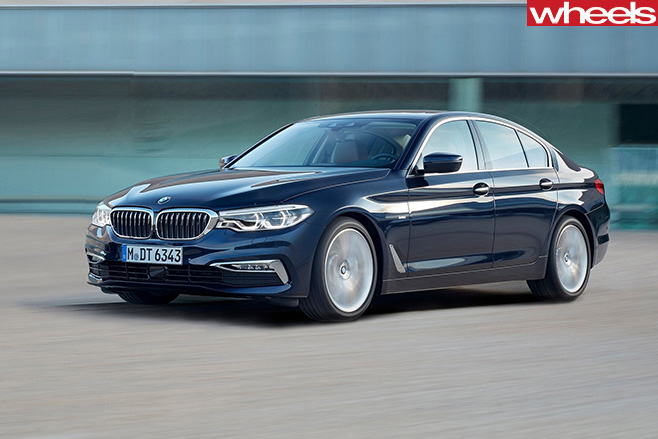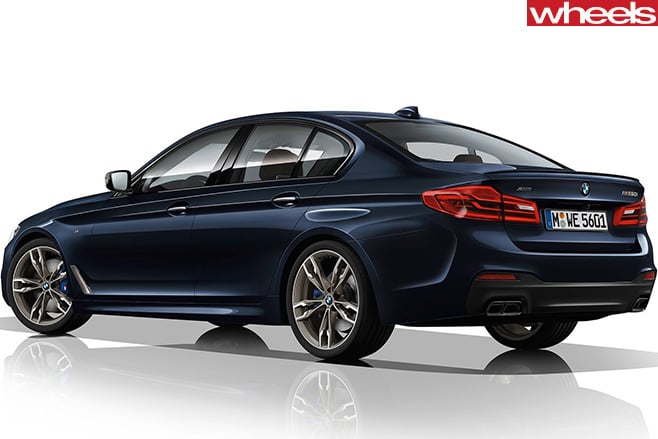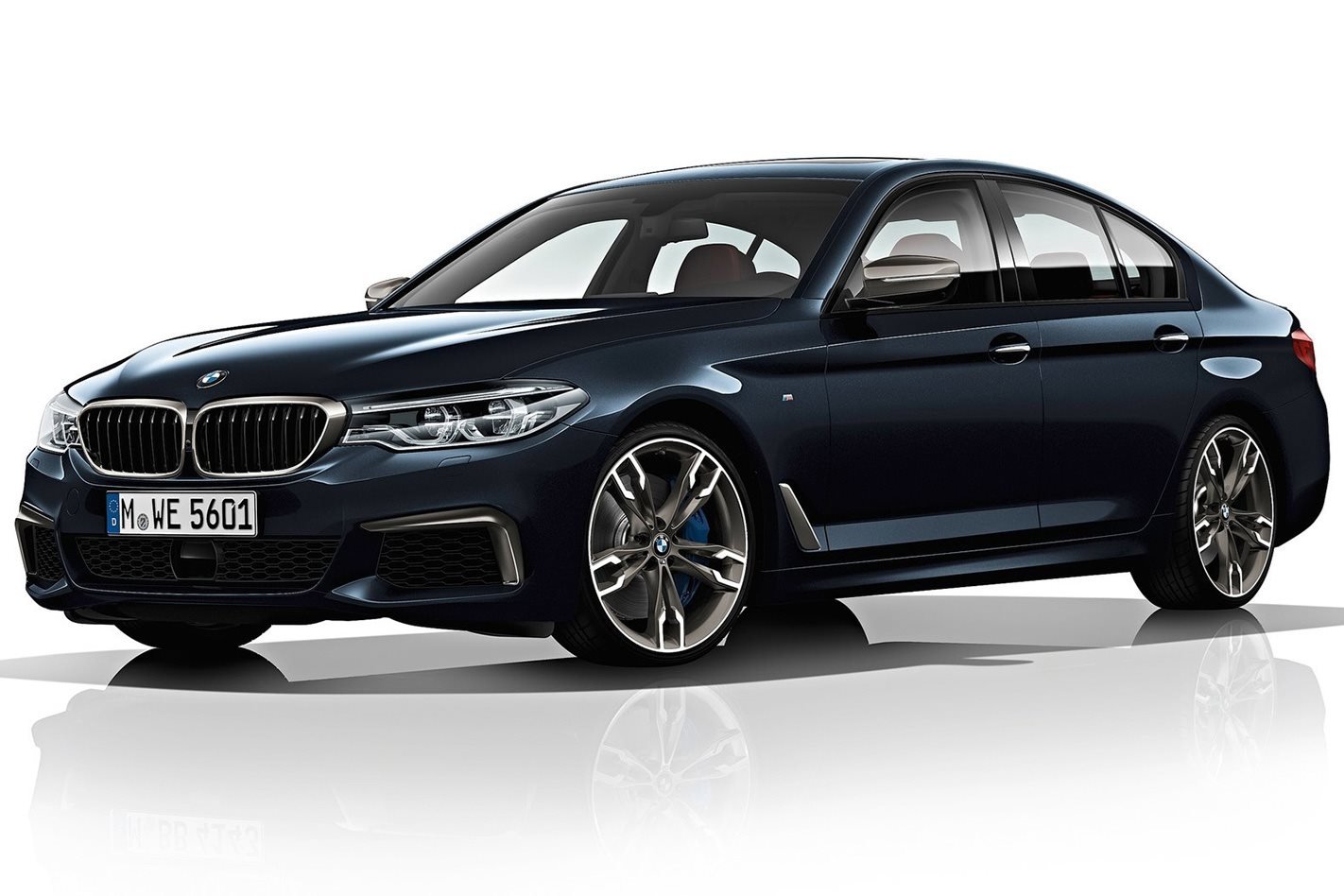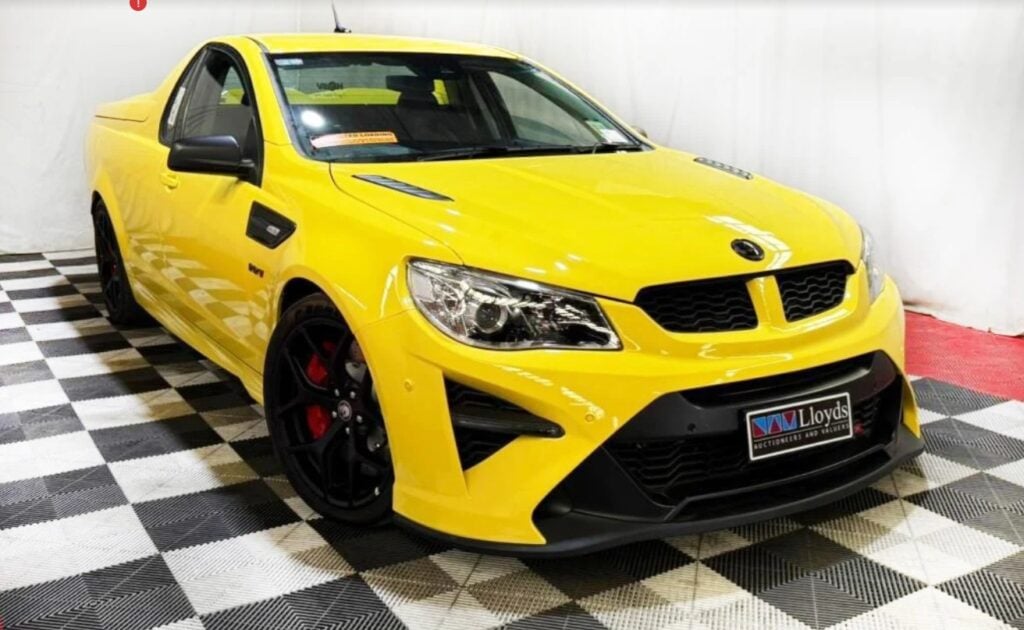While you may need to squint to see the changes there’s a lot to like about the new BMW 5 Series, which was revealed this week headlined by a twin-turbo V8-powered performance variant capable of reaching the 100km/h in four seconds flat.
The BMW M550i xDrive caps off the seventh-generation 5 Series range, which features new turbocharged petrol and diesel engines that provide better fuel efficiency without trading in performance.
And BMW’s announcement of the M550i is good news for anyone not willing to wait for the 2018 M5, due late next year. With a twin-turbocharged 4.4-litre V8 engine delivering 340kW at 5500rpm and 650Nm of torque from 1800rpm to all four wheels via an 8-speed Speedtronic transmission, performance should be scintillating.

While these powertrain numbers are a modest improvement on the figures generated by the F10 550i it replaces, the M550i’s 4.0 sec 0-100km time is 0.6 secs quicker and even beats the current model BMW M5 Pure by a not-insubstantial 0.3 secs. Claimed fuel economy, meanwhile, is a restrained 8.9 l/100km
Exciting stuff, however you’ll have to wait until March at the earliest for the seventh-gen 5 Series to roll into Aussie showrooms
All models in the new 5 Series range benefit from BMW’s EfficientLightweight design concept, which helped the seventh-gen 5 Series shed around 100kg, while improved aerodynamics result in a drag coefficient reduction of 10 per cent: setting a new sedan benchmark of 0.22.
While the V8-powered M550i commands the most attention, the range will initially be comprised of more sober models:
- 530i, with a 185kW/350Nm 2.0-litre four-cylinder petrol engine
- 540i, with a 250 kW/450Nm 3.0-litre straight-six petrol engine – this is no slouch either, with a 0-100km/h time of 4.8secs.
- 530d, with a 195 kW/620Nm straight-six diesel
- 520d, with the familiar 140kW/400Nm four cylinder diesel

- 530e iPerformance plug-in hybrid with a 185kW/420Nm 2.0-litre four-cylinder petrol engine and BMW eDrive electric drive system, with electric range of 45km and combined fuel economy of 2.0 litres/100 km
- 520d EfficientDynamics Edition powered by a 140kW/400Nm 2.0-litre four-cylinder diesel engine that drinks 3.9litres/100km combined.
Aesthetic differences include a more pronounced shoulder line, wider headlights and a slightly narrower kidney grille, while the boot is further integrated into the redesigned C-pillar.

It also features plenty of new tech to help take it one step further to full automation. Lane Change Assistant and Lane keeping Assistant are available on the new 5er, and give it the ability to autonomously change lanes at speeds up to 180km/h while also self-steering around obstacles before returning to the correct lane position.
Optional active cruise control comes with extended functions including optional Intelligent Speed Assist which is capable of relieving the driver of acceleration, braking and steering duties from a standing start up to 210km/h.

The head-up display is 70 percent larger with a sharper resolution, and all versions will come with BMW’s Professional Media system as standard, featuring a 10.25-inch display with touch control and the latest iDrive set-up.
Apps include Car-to-X technology, which allows the car to communicate with other BMWs and sharing traffic and weather information, which BMW says is another step towards full automation.
Other interior upgrades include a new instrument cluster, acoustic glazing for the windscreen and an optional Bowers & Wilkins sound system.
BMW has yet to release Australian specifications and pricing.






